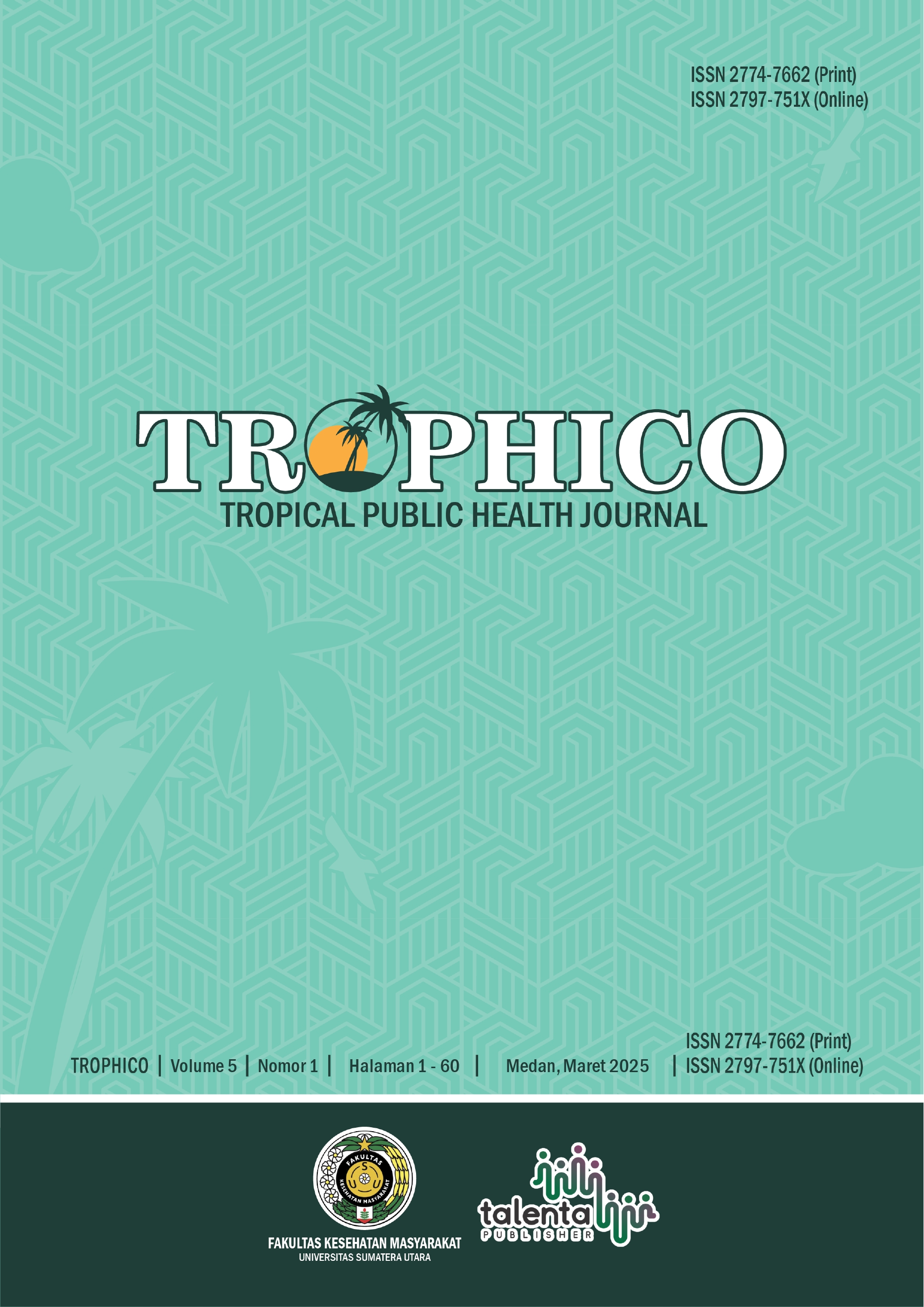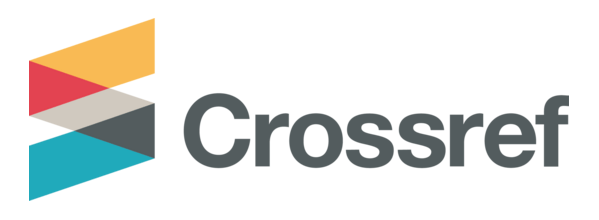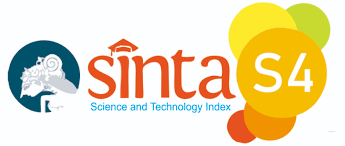Bioaktivator limbah ikan vs EM4: Solusi hijau untuk pengomposan cepat sampah organik pasar
DOI:
https://doi.org/10.32734/trophico.v5i1.20165Keywords:
Organic Waste, Compost, Biactivator, EM4Abstract
The primary source of waste generation is household activities, succeeded by traditional markets. A significant source of waste in Tanjungpinang City District originates from the market. Initiatives to repurpose market waste, including vegetable refuse, serve as raw materials for organic fertilizer production, employing microorganisms sourced from market waste, specifically fish waste. The aim was to assess the efficacy of fish waste as a bioactivator in compost production. This quantitative research employed a semi-quasi-experimental design featuring a control group and a treatment group, focusing on organic waste comprising vegetable scraps and fish waste. Physical observations revealed a dark hue, a soil-like texture, and an earthy aroma. The mean temperature of compost without a bioactivator was 28.4°C, with the addition of EM4 it was 28.5°C, and with the incorporation of fish waste as a bioactivator, it remained at 28.4°C. The average humidity of the compost without bioactivator, with the addition of EM4, is 33.33%, whereas with the addition of fish waste bioactivator, it is 33.7%. The mean pH of compost without a bioactivator is 6.82 with the addition of EM4 and 6.80 with the incorporation of fish waste as a bioactivator. The composting duration for vegetable waste without a bioactivator was 16 days, whereas compost with EM4 and fish waste bioactivators required 12 days. The parameters of temperature, humidity, pH, color, odor, and texture of the compost satisfied the criteria for use as organic fertilizer. It is advisable to evaluate the parameters of shrinkage, moisture content, carbon-to-nitrogen ratio, location, and environmental factors, as they pertain to plants and community applications.
Downloads
References
Badan Standardisasi Nasional. (2004). Spesifikasi kompos dari sampah organik domestik. Badan Standardisasi Nasional, 12.
Ben Rebah, F., & Miled, N. (2013). Fish processing wastes for microbial enzyme production: a review. 3 Biotech, 3(4), 255–265. https://doi.org/10.1007/s13205-012-0099-8
Coppola, D., Lauritano, C., Palma Esposito, F., Riccio, G., Rizzo, C., & de Pascale, D. (2021). Fish Waste: From Problem to Valuable Resource. Marine Drugs, 19(2). https://doi.org/10.3390/md19020116
Devi, N. L., Singh, A. H., Nongthombam, J., Kumar, S., & Chaudhary, K. P. (2024). Fish Waste Compost - A Fertilizer for Organic Agriculture. Journal of Experimental Agriculture International, 46(11 SE-Original Research Article), 778–785. https://doi.org/10.9734/jeai/2024/v46i113098
Dewanto, F. G., Londok, J. J. M. R., Tuturoong, R. A. V., & Kaunang, W. B. (2017). Pengaruh Pemupukan Anorganik dan Organik terhadap Produksi Tanaman Jagung sebagai Sumber Pakan. Zootec, 32(5), 1–8.
KLHK. (2021). Statistik Lingkungan Hidup dan Kehutanan Indonesia 2021. https://www.bps.go.id/id/publication/2021/11/30/2639657be1e8bd2548469f0f/statistik-lingkungan-hidup-indonesia-2021.html
Kumari, N., Hussain, A., & Ghosh Sachan, S. (2024). Microbes as a tool for the bioremediation of fish waste from the environment and the production of value-added compounds: a review. Letters in Applied Microbiology, 77(4). https://doi.org/10.1093/lambio/ovae028
Larasati, A. A., & Puspikawati, S. I. (2019). Pengolahan Sampah Sayuran Menjadi Kompos dengan Metode Takakura. Ikesma, 81.
Maksudi, M., Wigati, S., & Syafwan, S. (2022). Teknik Thermo-Composting untuk Sustainable Agri- Entrepreneurship Thermo-Composting Technique for Sustainable Agri-Entrepreneurship. Seminar Nasional Fakultas Pertanian Universitas Jambi Tahun 2022 “Smart Technology for Sustainable Agripreneur,” 93–104.
MENDAGRI. (2008). Undang-Undang Republik Indonesia Nomor 18 Tahun 2008 tentang Pengelolaan Sampah (No. 18; Vol. 49, pp. 69–73).
Mishra, S. K., & Yadav, K. D. (2021). Application of locally available microbial inoculant to accelerate green waste composting at a community level. Bioresource Technology Reports, 16, 100859. https://doi.org/https://doi.org/10.1016/j.biteb.2021.100859
Nurdini, L., Amanah, R. D., & Utami, A. N. (2016). Pengolahan Limbah Sayur Kol menjadi Pupuk Kompos dengan Metode Takakura. Prosiding Seminar Nasional Teknik Kimia “Kejuangan”Pengembangan Teknologi Kimia Untuk Pengolahan Sumber Daya Alam Indonesia, 17 Maret 2016, 1–6.
Rahayu, P., Fitrianingsih, Y., & Sulastri, A. (2024). Pembuatan Kompos dari Limbah Pasar Pagi Menggunakan Kombinasi Aktivator EM4, Mol Jeroan Ikan, dan Mol Bonggol Pisang. Rekayasa Hijau: Jurnal Teknologi Ramah Lingkungan, 8(261), 119–136.
RamkumarAishwarya, SivakumarNallusamy, & VictorReginald. (2016). Fish Waste-Potential Low Cost Substrate for Bacterial Protease Production: A Brief Review. In The Open Biotechnology Journal (Vol. 10). Bentham Science. https://doi.org/10.2174/1874070701610010335
Rastogi, M., Nandal, M., & Khosla, B. (2020). Microbes as vital additives for solid waste composting. Heliyon, 6(2). https://doi.org/10.1016/j.heliyon.2020.e03343
Siagian, S. W., Yuriandala, Y., & Maziya, F. B. (2021). Analisis Suhu, pH dan Kuantitas Kompos Hasil Pengomposan Reaktor Aerob Termodifikasi dari Sampah Sisa Makanan dan Sampah Buah. Jurnal Sains &Teknologi Lingkungan, 13(2), 166–176.
SIPSN. (2020). Timbulan sampah. https://sipsn.menlhk.go.id/sipsn/public/data/timbulan
Subula, R., Uno, W. D., & Abdul, A. (2022). Kajian Tentang Kualitas Kompos yang Menggunakan Bioaktivator Em4 (Effective Microorganism) Dan Mol (Mikroorganisme Lokal) Dari Keong Mas. Jambura Edu Biosfer Journal, 4(2), 54–64. https://doi.org/10.34312/jebj.v4i2.7753
Sudrajat, J., Komariyati, K., & Supriyanto, S. (2018). Upaya Penanganan Limbah Olahan Ikan Menjadi Pakan Ternak dan Aplikasinya terhadap Budidaya Ternak Itik. Jurnal Pengabdian Kepada Masyarakat, 24(1), 565.
Walpajri, F., Siregar, F. W., Ilyosa, A. N., & Wiyaga, M. (2023). Effectiveness of Various Types Bio-Activators to Speed up the Composting Process and Quality of Compost Fertilizer. International Journal of Progressive Sciences and Technologies (IJPSAT), 36(2), 630–636.
Wiryono, B., Muliatiningsih, M., & Dewi, E. S. (2020). Pengelolaan Sampah Organik di Lingkungan Bebidas. Jurnal Agro Dedikasi Masyarakat (JADM), 1(1), 15–21.
Worotitjan, F. D., Pakasi, S. E., & Kumolontang, W. J. . (2022). Teknologi Pengomposan Berbahan Baku Eceng Gondok (Eichhornia crassipes) Danau Tondano. Jurnal Agroekoteknologi Terapan, 3(1), 1–7.
Xia, Y., Feng, J., Zhang, H., Xiong, D., Kong, L., Seviour, R., & Kong, Y. (2024). Effects of soil pH on the growth, soil nutrient composition, and rhizosphere microbiome of Ageratina adenophora. PeerJ, 12, e17231. https://doi.org/10.7717/peerj.17231
Downloads
Published
How to Cite
Issue
Section
License
Copyright (c) 2025 Tropical Public Health Journal

This work is licensed under a Creative Commons Attribution-ShareAlike 4.0 International License.
















